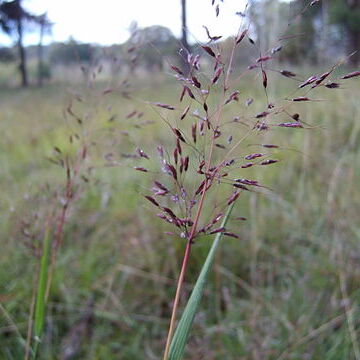Perennial or annual. Culms erect, decumbent or rambling. Leaf blades linear, sometimes aromatic; ligule membranous, margin ciliolate. Inflorescence a terminal open panicle with elongate central axis; branches capillary, subdivided, each branchlet tipped by a short raceme; racemes with 1–5(–8) spikelet pairs, often reduced to triads of 1 sessile and 2 pedicelled spikelets, basal homogamous spikelet pairs absent; rachis internodes and pedicels slender, with a median translucent stripe between thickened margins. Sessile spikelet dorsally compressed; callus very short, obtuse, shortly bearded; lower glume cartilaginous, broadly convex to slightly concave, flanks rounded, keeled toward apex, apex acute to obtuse; upper glume boat-shaped, dorsally keeled; lower floret reduced to a small empty hyaline lemma; upper lemma stipitiform, entire, awned from apex; awn geniculate, glabrous or puberulous. Pedicelled spikelet male or barren, similar to the sessile or smaller, herbaceous.
Annuals or perennials. Leaf-blades flat, sometimes aromatic; ligule membranous. Inflorescence a delicate panicle with elongated central axis and capillary branches bearing short racemes; racemes with 1–5(–8) sessile spikelets, without homogamous pairs at the base; internodes and pedicels linear, with a hyaline median line. Sessile spikelet dorsally compressed; callus very short, rounded; lower glume broadly convex to slightly concave on the back, abruptly rounded on the flanks, without pits; lower floret reduced to a hyaline lemma; upper lemma entire, with a glabrous or puberulous awn. Caryopsis oblong, slightly dorsally compressed. Pedicelled spikelet usually well developed.
Inflorescence a delicate loose panicle bearing short, 1–5(8)-jointed racemes at the ends of capillary branches and branchlets; rhachis internodes and pedicels filiform, with a translucent longitudinal groove.
Sessile spikelet callus obtuse; inferior glume cartilaginous, broadly convex to slightly concave, acute or obtuse; superior lemma forming the hyaline base to its awn, entire; awn glabrous.
Annuals or perennials; mostly rambling.
Pedicelled spikelet male or neuter.

